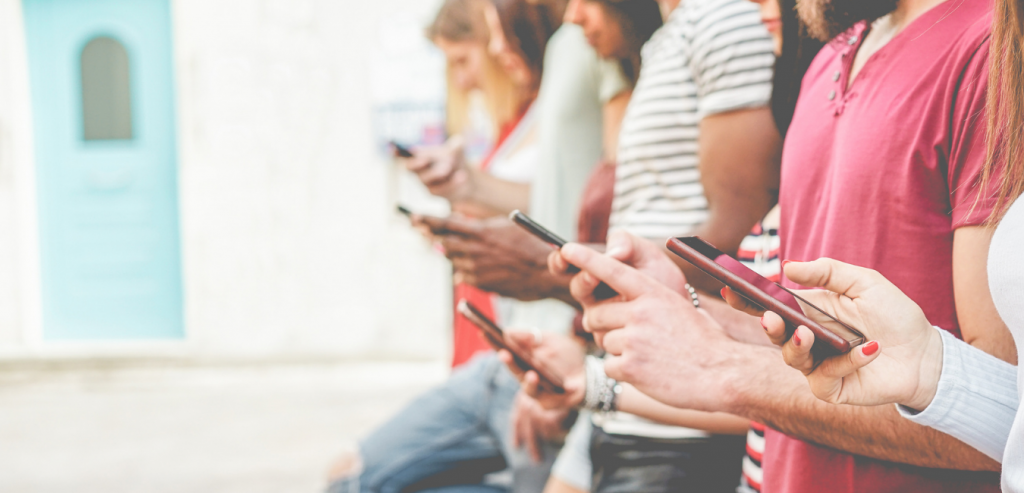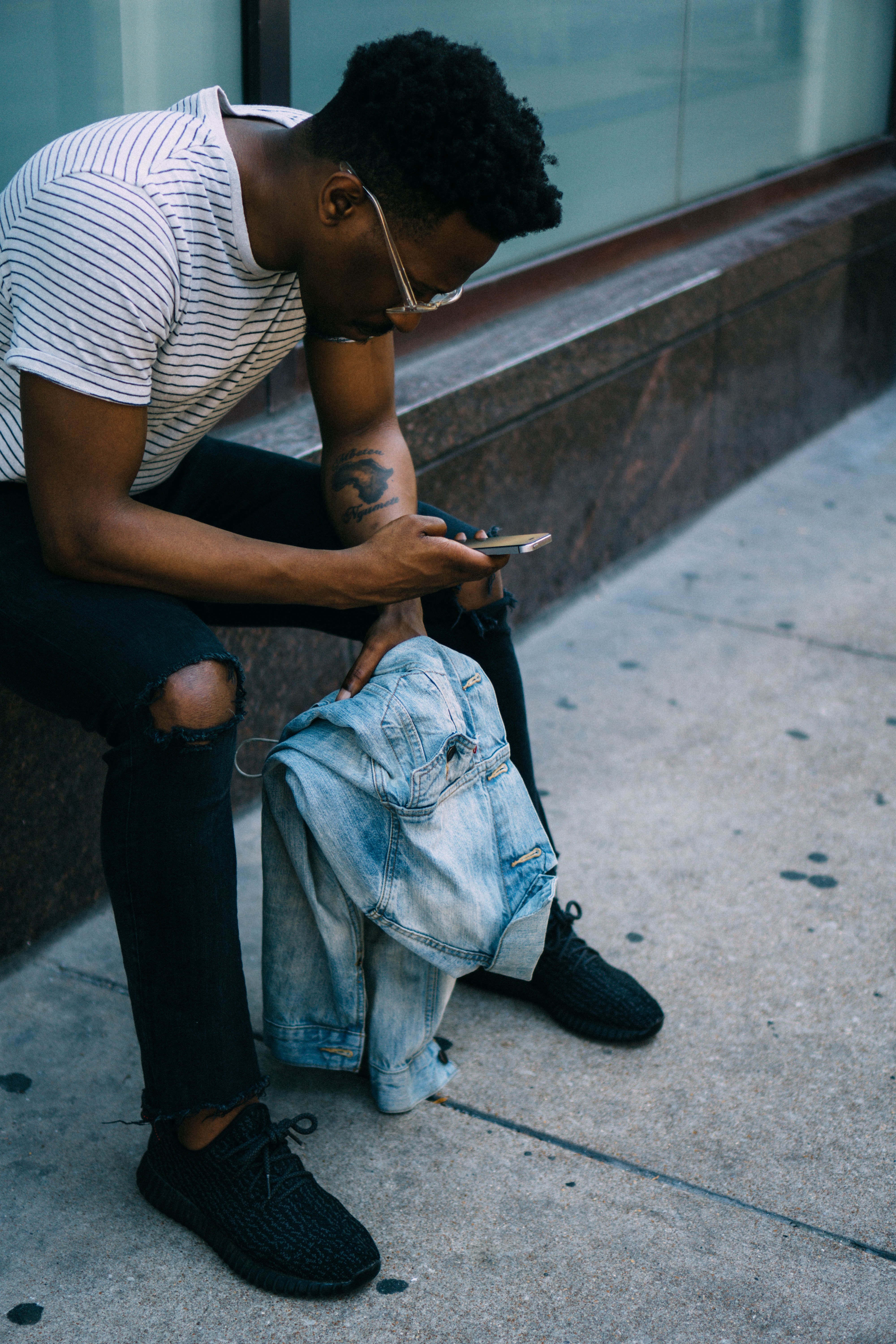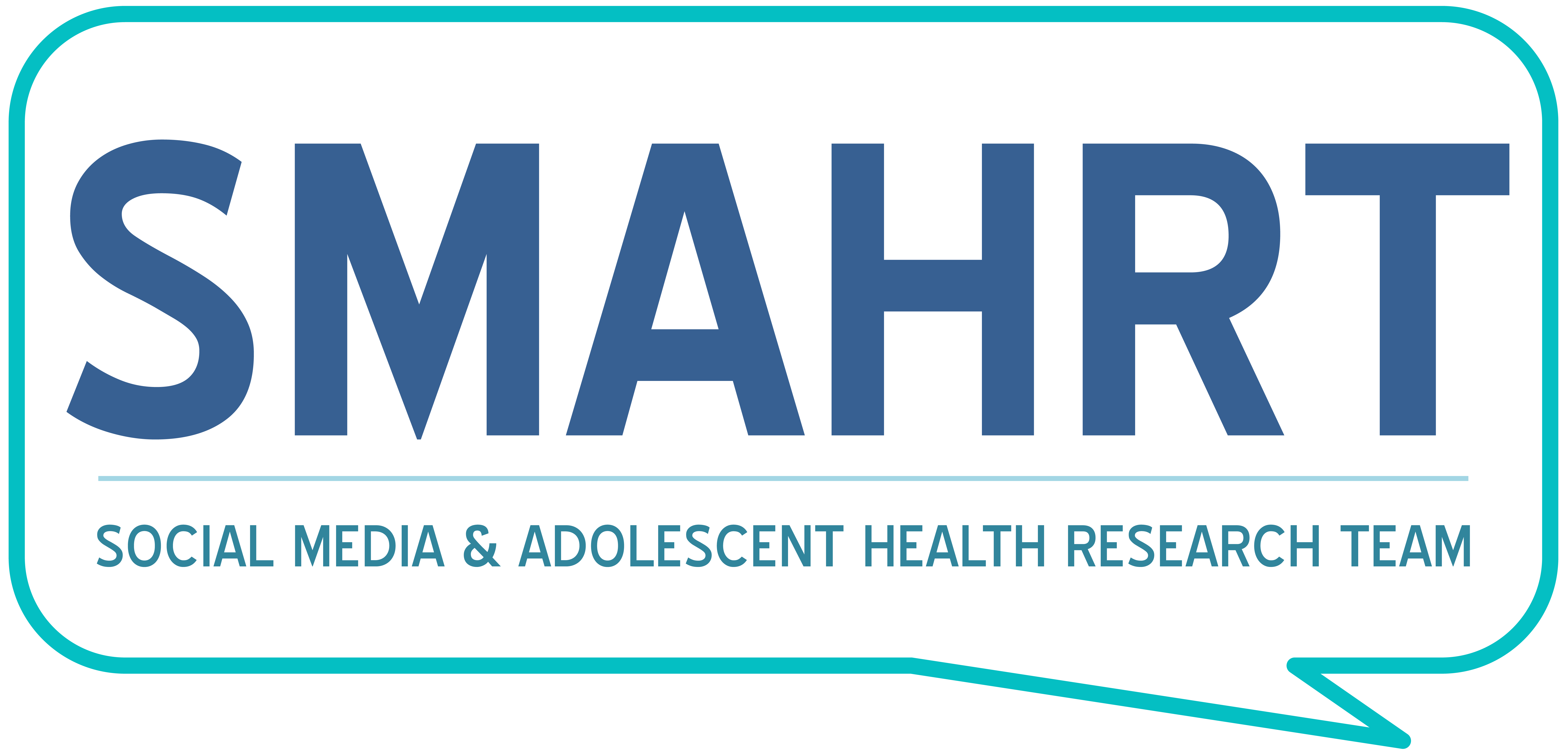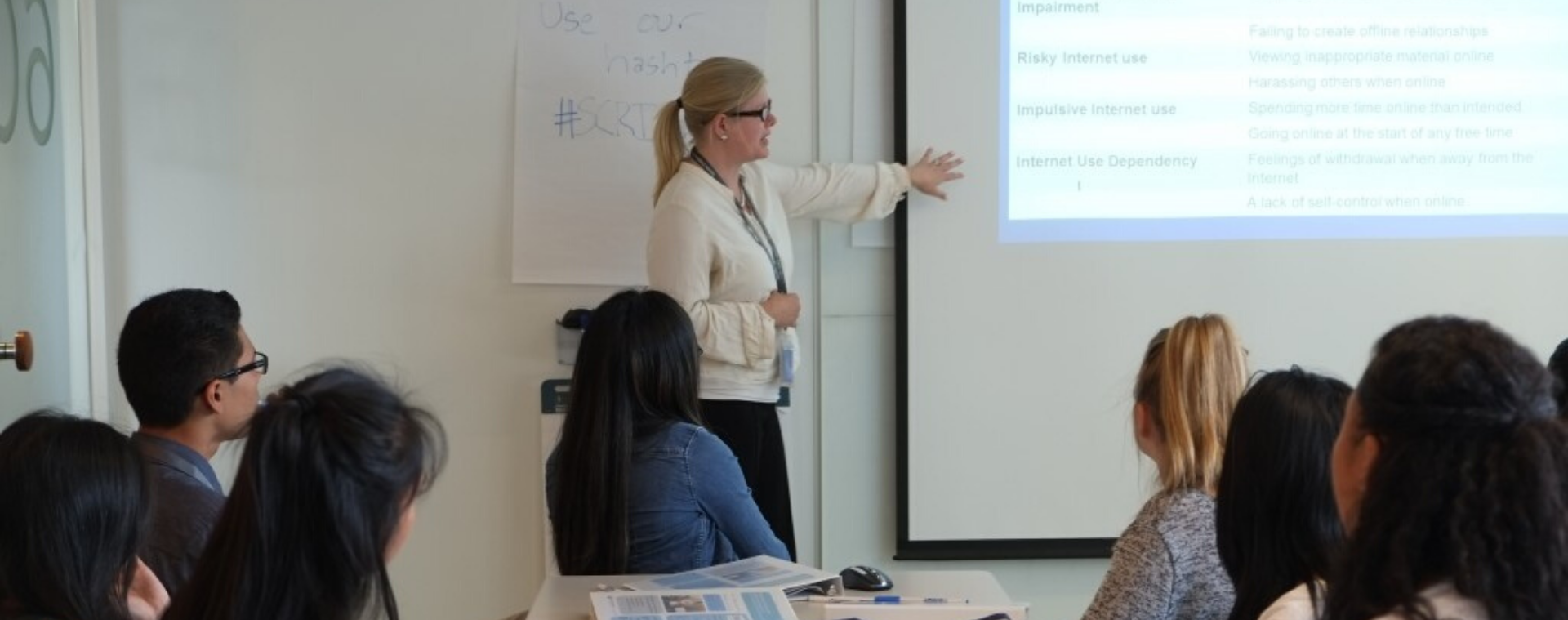
By: Anna Jolliff
The relationship between social media and depression has been a primary focus on SMAHRT for ten years and counting. Now, as we near the end of mental health month, we’re taking a step back to survey ten years of research findings. What have we really learned? What questions have we yet to ask? And, while many of the answers yet elude us, how can we create the healthiest possible relationship with social media?
What We’ve Learned
At SMAHRT, our interest in adolescent depression and social media use isn’t exactly unique. In the last ten years, it has become enormously common for researchers to ask, “Is social media associated with depression?” If you don’t believe me, check out this review of reviews, which aggregates the findings of no less than six systematic reviews – that’s 228 articles – evaluating essentially this question [1]. After all that work, it turns out that the results are still inconclusive.
While SMAHRT’s interest in social media use and depression isn’t all that special, I pride our team in asking the essential question in interesting ways. We aren’t simply searching for associations between social media screen time and depression. We’ve been asking questions that are more specific and, therefore, more actionable. For example: What are the risks, not of social media use screen time, but of problematic social media use? What are the mental health risks of social media experiences, like cyberbullying or following celebrities? How do people share about their experiences with depression on social media? Is posting about depression on social media associated with experiencing depression “IRL?” What motivates people to share their depressive symptoms online, and how do their peers respond? For us, these questions take center stage.

In short, here’s what we’ve learned. (I won’t say we “know” it, because as researchers we remain open to “un-knowing” stuff, too.) Problematic internet use [2], following online celebrities [3] , and experiencing cyberbullying [4] have all been associated with greater risk for depression. In 2011, about 25% of college undergraduates displayed depressive symptoms on their Facebook pages [5], and displaying depression online was associated with meeting clinical criteria for depression offline [6] [7]. When people post about depression on social media, it’s often by discussing a particularly bad day or sharing a song or video related to depression. (They don’t often use the word “depression” itself) [8]. Students displaying depression online say they’d prefer to be approached directly by a close friend or known adult [9]. Likewise, those who spot depression displays on social media are much more likely to reach out if the person posting it is a close friend [10]. One of our most recent studies characterized depression, spearheaded by alumni Quintin Gaus, examined personal account videos on YouTube. Gaus found that videos and their comments sections alike contained many references to youth, suicidality, and treatment – though advocating for treatment was more rare. [11]
What Questions To Ask Next
This is just the tip of the iceberg; we have a long way to go. From our perspective, the following questions have yet to be fully explored: For whom does social media use actually cause depression, and for whom might it alleviate depression? How do members of minority populations (for example, gender, sexual, and racial minorities) uniquely experience social media? Is social media a locus of safety and community, discrimination and trauma, or both? What are the affordances of social media platforms that are most conducive to mental wellness, and how can tweaks to modern-day platforms result in positive mental health outcomes for teens?
How Can We Create a Healthy Relationship with Social Media

Of course, we’re not in charge of how quickly social media platforms change. (That is, unless you’ve got Mark Zuckerberg on speed dial.) But when it comes to social media – for better or worse – we are in charge of our own behavior. To develop a healthy relationship with social media, spend time curating your social media feed, so that you are minimizing unintentional negative exposures (e.g., photoshopped photos, traumatizing videos). You can also put down your phone before bed, and designate screen-free places in the home or times of the day; it’s recommended by the AAP, in part because nighttime screen use is associated with later bedtimes [12]. Last – especially if you’re someone who has considered a tech “detox” – consider the privilege inherent in being able to structure one’s life to avoid technology use completely. Have compassion, empathy, and curiosity for those who spend relatively more time on their devices than you do. Like you, they are doing the best they can.
1. Odgers, C.L. and M.R. Jensen, Annual Research Review: Adolescent mental health in the digital age: facts, fears, and future directions. J Child Psychol Psychiatry, 2020. 61(3): p. 336-348.
2. Moreno, M.A., L.A. Jelenchick, and D.J. Breland, Exploring depression and problematic internet use among college females: a multisite study. Computers in human behavior, 2015. 49: p. 601-607.
3. Charmaraman, L., et al., Early Adolescent Social Media-Related Body Dissatisfaction: Associations with Depressive Symptoms, Social Anxiety, Peers, and Celebrities. Journal of Developmental and Behavioral Pediatrics: JDBP, 2021.
4. Selkie, E.M., et al., Cyberbullying, depression, and problem alcohol use in female college students: a multisite study. Cyberpsychology, Behavior, and Social Networking, 2015. 18(2): p. 79-86.
5. Moreno, M.A., et al., Feeling bad on Facebook: Depression disclosures by college students on a social networking site. Depression and anxiety, 2011. 28(6): p. 447-455.
6. Moreno, M.A., et al., A pilot evaluation of associations between displayed depression references on Facebook and self-reported depression using a clinical scale. The journal of behavioral health services & research, 2012. 39(3): p. 295-304.
7. Moreno, M.A., L.A. Jelenchick, and R. Kota, Exploring depression symptom references on Facebook among college freshmen: A mixed methods approach. Open Journal of Depression, 2013. 2(03): p. 35.
8. Cash, S., et al., What College Students Post About Depression on Facebook and the Support They Perceive: Content Analysis. JMIR formative research, 2020. 4(7): p. e13650.
9. Whitehill, J.M., L.N. Brockman, and M.A. Moreno, “Just talk to me”: communicating with college students about depression disclosures on Facebook. Journal of Adolescent Health, 2013. 52(1): p. 122-127.
10. Egan, K.G., R.N. Koff, and M.A. Moreno, College students’ responses to mental health status updates on Facebook. Issues in mental health nursing, 2013. 34(1): p. 46-51.
11. Gaus, Q., A. Jolliff, and M.A. Moreno, A content analysis of YouTube depression personal account videos and their comments. Computers in Human Behavior Reports, 2021. 3: p. 100050.
12. Hamilton, J.L., et al., Social media use predicts later sleep timing and greater sleep variability: An ecological momentary assessment study of youth at high and low familial risk for depression. Journal of Adolescence, 2020. 83: p. 122-130.

